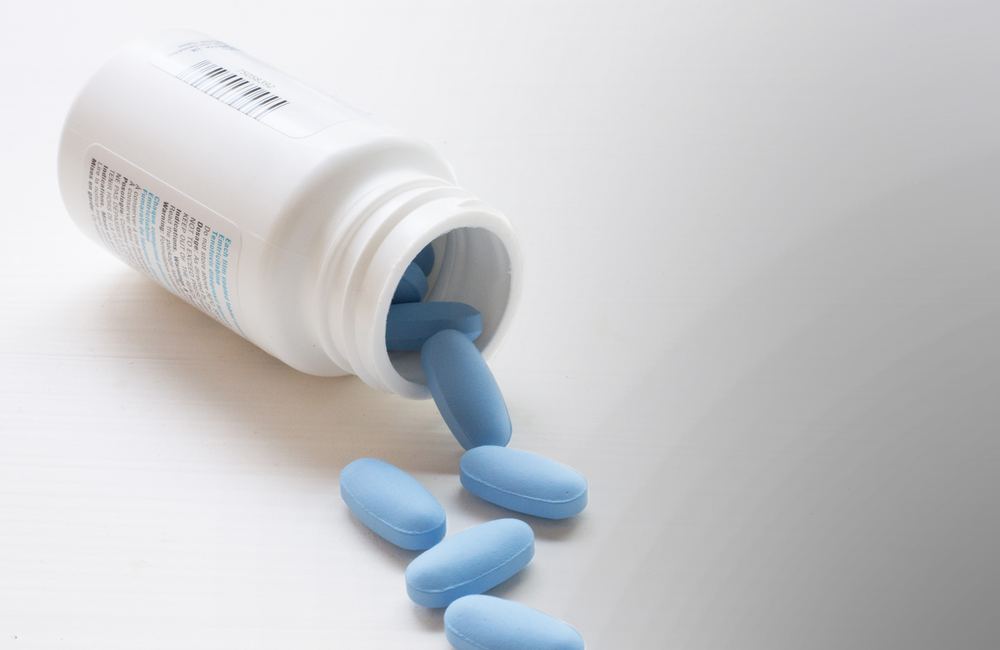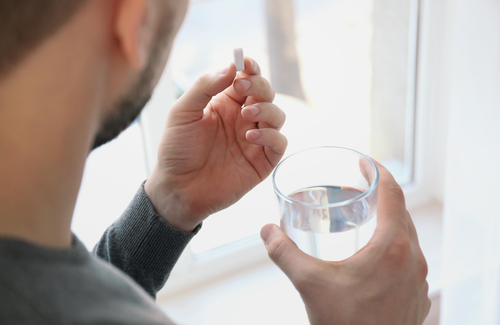
Two reports of HIV infection occurring despite apparent adequate adherence to PrEP, confirmed by drug level testing, are the first reliably documented cases to be published in peer-reviewed journals since 2018.
The most recent case was reported by Dr Matthew Spinelli in Clinical Infectious Diseases. It concerns a 44-year-old gay man in Texas and appears not to be due to poor adherence, but to infection with an HIV virus with an unusual combination of resistance mutations. Two characteristics of the case make it hard to argue against this being a genuine case of PrEP breakthrough. Firstly, samples of blood and hair confirm that he had had good adherence to PrEP in the two to three months leading up to his infection. Secondly, a pattern of HIV and viral load testing showed this was an acute infection that probably only occurred a few weeks at most before he reported symptoms. Notably, his initial positive HIV test was interpreted as a 'false positive' because his adherence appeared to be so good.
The other case was published in the May issue of the International Journal of Infectious Diseases by Professor Shui-Shan Lee and concerns a 24-year-old gay man from Hong Kong. It makes an interesting comparison as it is more likely in this case that the failure of PrEP was due to imperfect adherence. However, this is hard to prove because HIV seroconversion – the appearance of the antibodies that are detected by HIV tests – was delayed, occurring two months after a retrospective viral load test showed that he had already been infected, and occurred as long as three to four months after infection.
The Texas case – a 'false positive' that wasn't
The man in the Texan case started PrEP in December 2017. He had condomless anal sex while on PrEP and was mainly the insertive partner, with a few experiences of being receptive. His last negative HIV test was in April 2019.
In early June 2019 he attended clinic complaining of headache, sore throat and chills. Examination showed throat inflammation with a characteristic 'cobblestone' appearance that is often seen both in infections and allergic reactions. His total lymphocyte (white cell) count and platelet count were rather low. A fourth-generation HIV antigen/antibody test was positive but a standard antibody test was negative. (Fourth-generation tests can detect an HIV protein (p24) a few days before the body starts to make the antibodies that are detected by standard tests, which is usually within two to three weeks of infection.)
In this case, because the patient said he had 100% adherence to PrEP, he was told he probably had a false-positive result. But samples were sent to a laboratory for a full viral load and CD4 count, and when they returned two weeks later, in mid-June, it was clear this was no false positive. In fact the patient had had a very high viral load at 3.1 million, and a low CD4 count of 195.
These figures are characteristic of acute HIV infection, before the body has mounted the early antibody response that moderates, but does not completely contain, HIV infection. Even then, the viral load was higher than average for acute infection, suggesting the source partner (who has not been traced) was himself in the acute stage too and was therefore very infectious – as viral loads in source partner and recipient tend to be correlated. A second viral load test taken at this point showed that the patient’s viral load had already fallen 20-fold to 146,000, further evidence of very recent infection. At this point the patient was switched to an antiretroviral regimen based on bictegravir.
A resistance test showed that his HIV had a very unusual combination of resistance mutations in its reverse transcriptase gene. It had the common emtricitabine resistance mutation called M184V, and this often arises in situations where people continue PrEP while they have an acute HIV infection. However, it had a rare mutation conferring moderate resistance to most of the other nucleoside (NRTI) HIV drugs, including tenofovir, and two even rarer mutations to the non-nucleoside (NNRTI) drugs, notably to the drug rilpivirine. These could not possibly have happened due to the patient taking PrEP, so this must be a case of the transmission of a PrEP-resistant virus.
Retrospective drug level testing provided further evidence of this. A dried blood sample taken at the early June appointment showed levels consistent with seven-day-a week dosing and more than twice those seen in four-day-a-week adherence. Drug level tests were also done on the patient’s hair; these could look back before the likely date of infection. The levels seen, of 0.035 nanograms per milligram (ng/mg) in the four weeks before starting ART, and 0.028 ng/mg in the four weeks before that, were compatible with adherence to 5-6 doses a week. They take us back to mid-April, before all but the remotest likelihood of HIV infection.
This therefore looks like a case of infection with an NRTI- and NNRTI-resistant virus, which may also have overcome the barrier of PrEP due to a very high viral load in the source partner. Spinelli and colleagues note that only 1-3% of people with HIV in the US who have unsuppressed viral loads now have resistance to either emtricitabine or tenofovir, and resistance to both is even rarer.
The Hong Kong case – a positive test 3-4 months after infection
The second, contrasting case was published earlier in the year but is reported here for the purposes of comparison. The 24-year-old gay man was on a clinical trial of PrEP that was comparing the efficacy of daily versus event-driven ‘2-1-1’ PrEP. He reported receptive anal sex, often involving chemsex drugs. He was screened for HIV and started PrEP in September 2018 and at this point was found to have, and was treated for, syphilis, gonorrhoea in the throat, and rectal chlamydia.
In line with the trial protocol, he was switched to event-driven PrEP after four months on daily PrEP on 19 January 2019. An HIV antibody test he took on 2 February was negative, but he tested positive six weeks later, on 16 March. In contrast to the Texan patient, he was positive for HIV antibodies but not for the p24 antigen, suggesting he had been infected for longer – at least a month to six weeks beforehand. Also in contrast to the Texan patient, his viral load was quite low at this point at 9500.
His virus also carried the M184V emtricitabine resistance mutation and it would be tempting to believe this was a failure of event-driven PrEP. However, retrospective HIV RNA testing on stored blood samples showed that he already had HIV on 19 January, before he started ‘2-1-1’ PrEP.
A pill count showed that he had taken nearly all his doses while on daily PrEP but had missed eight doses in the five weeks between 13 October and 21 November. This included missing his PrEP on 1 and 2 November, which coincided with a single episode of condomless anal sex on 2 November. A dried blood sample taken on 19 January showed a level of tenofovir (685 femtomols) only just compatible with four-days-a-week dosing.
So it looks as if this if a case where the patient’s infection was not due to encountering someone with resistant virus, but to an infection that happened during a brief period of suboptimal adherence. What is unusual, however, is the long delay between the likely date of infection and a positive antibody test. If he was infected in early November (and he denied any condomless sex between November 2 and December 24), then there was a gap of between 3 and 4.5 months between infection and seroconversion.
This case would appear to be one of ‘blunted’ HIV infection, where the appearance of antibodies was delayed by the fact that he continued to take PrEP and so partially suppressed his HIV – this was also suggested by the comparatively low viral load. A 2017 review of the 2011 Partners PrEP study found that 17% of people who acquired HIV while having sub-optimal PrEP adherence took more than 100 days to produce HIV antibodies. The time frame of 91-133 days in this case would fit that.
The case is similar to several others reported in the literature, such as a 2016 case from New York and a 2017 case from Florida where the gap between likely exposure and testing positive was two and nearly three months respectively. Delayed seroconversion may also have been a factor in the unusual case of PrEP failure reported from Amsterdam in 2017 and was discussed as one of several difficulties in establishing the frequency of PrEP failures in a case from Switzerland reported at the 2019 EACS conference.
Both of the 2020 cases suggest that symptoms suggesting acute HIV infection should not be ignored, and tests discounted as false positives, even in the context of apparent high adherence to PrEP. As the Hong Kong investigators say of their case, “The phenomenon [of delayed seroconversion] argues for the avoidance of infrequent follow-ups of PrEP users, so that the diagnosis of failure and prompt ART will not be inadvertently delayed.”
Spinelli MA et al. Use of drug-level testing and single-genome sequencing to unravel a case of HIV seroconversion on PrEP. Clinical Infectious Diseases, early online edition, July 2020.
https://doi.org/10.1093/cid/ciaa1011
Lee S-S et al. Failure of pre-exposure prophylaxis with daily tenofovir/emtricitabine and the scenario of delayed HIV seroconversion. International Journal of Infectious Diseases 94:41-43. 2020.

